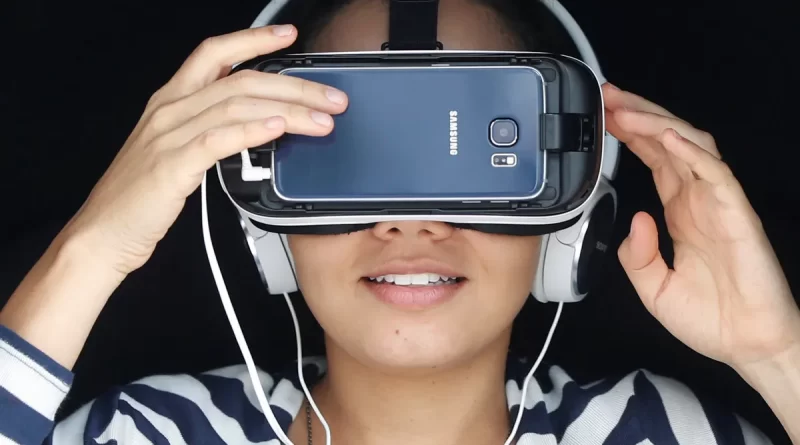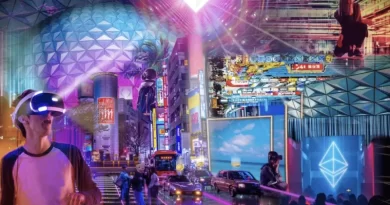Top Metaverse VR Trends of the 2022
The computing world is full of jargon and buzzword, one of which has recently made headlines is ‘Metaverse.’ The word has piqued the interest of practically everyone on the earth, from IT titans and venture capitalists to ordinary people like you and me. In what appears to be a chapter of a classic science fiction novel, we have arrived in the metaverse, one of the consequences of technological advancement. Years of invention and research have resulted in the rise of increasingly virtual worlds, which can be accessed via cryptocurrencies or non-fungible tokens (NFTs), social media, and augmented reality apps. These, along with other technological and digital breakthroughs, have contributed to the virtual world’s growth and expansion.
Metaverse Trends on the Rise
Because of the prevalence of ethical considerations, it is critical for company owners to understand the various technologies propelling the Metaverse forward and the impact they may have on users, the environment, and our society. Businesses can create new methods to enrich our society through constructive uses of virtual reality connectivity that enrich our world and keep the digital economy thriving by comprehending these technologies.
Furthermore, understanding these technologies is critical because when more advanced approaches for usage in Metaverse projects are created, the average cost of US$48,000 for app design in the United States will definitely rise. When preparing their next move, business owners must grasp what they must concentrate on. Businesses must also recognize that as the Metaverse landscape evolves so will the nature of the content. As the industry evolves, creating great content marketing strategies with these immersive, virtual settings in mind is critical.
World of Blockchain
Blockchain highlights blockchain for data management transparency with the advent of a new open, decentralized internet. Blockchain enable decentralized authority and simple, trustless data exchange. Many academics believe that blockchain technology will be critical in building a safe and egalitarian metaverse. The blockchain is also helping to build a new metaverse economy, which is defined by artists’ ability to sell their work and be adequately compensated for their efforts. Non-fungible tokens, or NFTs, are an intriguing aspect of the metaverse because they enable users to sell everything from data to services and experiences while also benefiting the artist or creator behind each asset.
Web 3.0
Without the use of an intermediary, Web 3.0 will enable women, men, machines, and businesses to trade value and information and work with worldwide counterparties they do not know or explicitly trust. The most significant change possible by Web 3.0 is a reduction in the level of trust required for global coordination. This demonstrates a shift away from openly trusting each member and striving to obtain trust through extrinsic means and toward implicitly trusting all network constituents. Web 3.0 is expected to expand the breadth and scope of both human and machine interactions well beyond anything we can currently envisage. Many infographics about the metaverse are accessible on the internet to help you understand it better.
Cybernetics
Cybernetics, which covers everything from simple joysticks, headsets, and googles to more advanced features that remove boundaries between human sensory-motor systems and digital things and animals, is another significant driver of Metaverse interactions. We already have experimental brain-computer links in the works. Nonetheless, the rise of cybernetics is the ideal way to take an idea from our heads into machines and communicate the results back to us, i.e., imagination to experience rapid execution and even an improvement over a low-code platform that can scale these cybernetic-driven rapid prototypes. A diverse spectrum of businesses is linking the physical and digital worlds.
Extended Reality (XR): Virtual Reality and Augmented Reality
The market for extended reality (XR) will be worth $393 billion by 2025. The term “XR” refers to immersive technology that includes virtual, augmented, and mixed reality. XR technologies such as cameras, microphones, and sensors are used to create a simulated environment while still allowing you to interact with reality. The growing popularity of XR is one factor that will continue to change the metaverse. Liminal environments, which integrate virtual and actual contacts, are making a buzz in industries like culture and art. As a result of XR, liminal zones will become more noticeable at mixed or hybrid events and locations in the future, according to the paper.
Platform With Low Code
The advent of low-code and no-code platforms, as well as AI, will make it easier for non-technical citizen creators to quickly move from concept to execution, whether for consumer or enterprise experiences, or to create social or commercial value. Gartner and others have a lot of data on enterprise use of these platforms, so this will very probably pick up speed, allowing a large number of people to build and sell digital assets in a very capital-efficient way.
Virtual Presence
To improve the user experience when traversing interactive 3D interfaces, the metaverse ecosystem—an alternate digital environment—will be offered predominantly through virtual reality. According to experts, this virtual sense of presence could be the trump card in attracting and retaining users. As a result, most of the innovative flare is anticipated here. The metaverse will not only enhance current business models, but will also create new markets. Companies should expect a growth in the supply of virtual services via a customer’s online presence (such as online meetings, medical appointments, concerts, and gym courses) as well as the offering of virtual objects to avatars.
Companies that work with digital platforms to market digital assets ranging from designer clothing to virtual real estate are projected to grow in size. Brand owners will be planning ahead of time how to utilize and defend their intellectual property. Because aspects of the metaverse’s creation will rely on creative technology (especially the usage of AI), patent protection and freedom to operate will be critical considerations.
Humans in Digital Form
A new level of immersion would also involve a prominent role for digital humans — the metaverse’s NPCs (non-player characters) and virtual aides. According to Gartner’s 2021 tech hype cycle research, this technology will be useful within the next 10 years, with XR being the best scenario.
There are currently companies dedicated to this type of technology, such as UNEEQ. We will see a huge leap from what we presently have with Alexa and Cortana, which are abstractions without a face, to a more sympathetic digital assistant who can become our concierge and provide us with context-rich information, resulting in an even more comfortable user experience.
3D Animation
The adoption of cutting-edge technologies will significantly shape the metaverse. The availability of 3D modeling or reconstruction, for example, will serve as an excellent illustration of how people will incorporate themselves into the virtual environment. In the recent case of Asia’s first metaverse wedding celebration, newlyweds had a virtual wedding in order to evade coronavirus-related restrictions on their big day. This is an excellent example of how 3D modeling enabled the construction of digital avatars of the newlyweds and the 3,000 individuals in attendance at the reception.
3D Modeling
The adoption of cutting-edge technologies will have a significant impact on the metaverse. For example, the availability of 3D modeling or reconstruction will be a perfect illustration of how individuals will integrate themselves into the virtual environment. In the recent case of Asia’s first metaverse wedding celebration, newlyweds conducted a virtual wedding to avoid coronavirus-related limitations on their big day. This is a prime illustration of how 3D modeling permitted the construction of digital avatars of the newlyweds and the 3,000 individuals that attended the reception.




